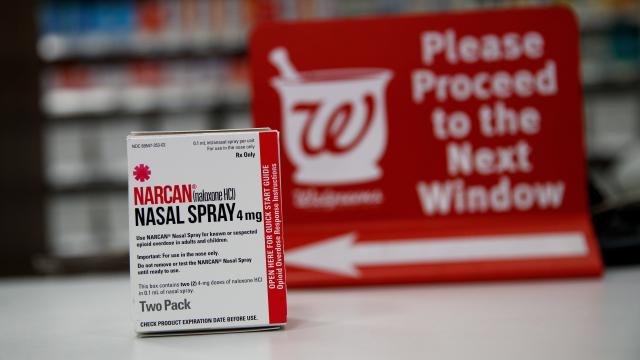The devastation wrought by opioids in recent years is only part of a much larger drug crisis in the United States that stretches back four decades, according to a new study published Thursday in Science. Since 1979, the study found, the overdose death rate has been exponentially climbing, even as the deadly drugs of choice have changed.
Hoping to better understand the opioid crisis, researchers at the University of Pittsburgh looked at the annual overdose deaths reported to the federal government from 1979 to 2016 (excluding deaths thought to be intentional). When they did, they came to a simple but startling conclusion: There have been different waves of overdose deaths throughout the years, each primarily caused by different drugs and affecting different groups of people in different areas of the country, but the overall annual death rate has steadily risen without interruption.
Long before legal opioids began being widely misused and abused starting in the mid 1990s, the rate of overdose deaths was already increasing. And while deaths from prescription opioids did increase substantially until 2013, the annual rate has since slowed down. Meanwhile, deaths from other drugs like heroin and cocaine have increased much more instead.
Taken a whole, they estimated the annual overdose death rate has doubled about every nine years since 1979.
“There’s a paradox here. You have this smooth, inexorable increase, but it’s composed of all these different components,” senior author Donald Burke, an epidemiologist at the university, told Gizmodo. “It suggests there are deep drivers — something else going on — that are pushing this growth and need to be addressed.”
The study doesn’t delve too much into what these deep drivers could be. But Burke notes some researchers have theorised that people’s growing lack of purpose, loss of community, and economic woes are helping spark a rise in so-called deaths of despair, such as overdoses, suicides, and alcohol-related illnesses.
There are likely outside factors, too, such as advancing technology that allows dealers to sell more potent drugs in smaller amounts at lower prices, increasing supply and driving up demand. One clear example of this is fentanyl, a synthetic opioid that has dramatically risen in popularity since it arrived in the US around 2013, smuggled over from China. Fentanyl is both cheaper and more powerful than naturally derived heroin, but it’s also more dangerous. In 2017, fentanyl and similar opioid analogs accounted for nearly half of all opioid overdose deaths, helping make it the deadliest year for overdoses in the US so far.
As bad as fentanyl is, though, the study also suggests that going after any single bogeyman is a losing battle.
“One possible interpretation [of the study] is that if we address the current drugs that are causing an epidemic, without addressing the root causes, other drugs will take its place,” said Burke. “So we need to do both. We need to take care of the immediate issues of the opioid epidemic, but also understand what’s driving the drug use, and address those deeper issues.”
The Centres for Disease Control and Prevention estimates that there were 72,287 drug overdose deaths in the US in 2017, with the majority caused by opioids.
[Science]
